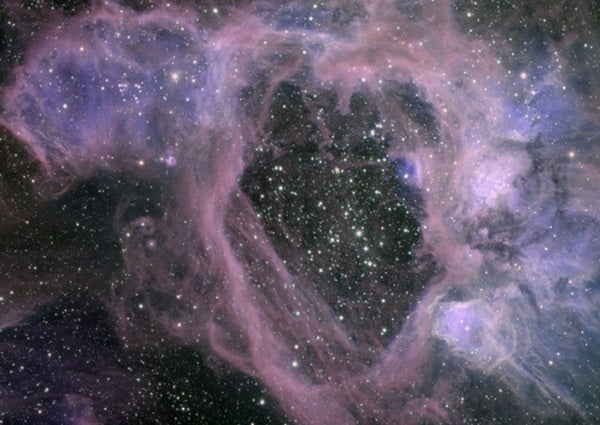A recent image from the Gemini South Telescope in Chile reveals in stark detail winds from massive stars blowing a giant bubble within a nebula.
The bubble spans 320 light-years by 250 light-years and lies in the complex known as N44, which lies in the Large Magellanic Cloud (LMC) — an irregular galaxy visible from the Southern Hemisphere. The LMC orbits the Milky Way some 160,000 light-years away. Astronomers believe cataclysmic deaths of massive stars — events known as supernovae — cleared the surrounding area of gas and dust, forming the giant void.
According to Sally Oey of the University of Michigan, this image reveals X-ray-emitting gas escaping from N44. Such gas heats up to about 1,000,000 K and permeates the interstellar medium, but astronomers don’t know where it comes from. Oey and her colleagues believe the gas originates from superbubbles, like the one found in N44, but they didn’t have evidence to support the theory until this recent observation.
“In N44, we actually can see such X-ray-emitting-gas escaping from the superbubble,” Oey told Astronomy. “So this looks like the smoking gun we’re looking for.”
The smoking gun leads back to the massive stars and supernova remnants inside N44’s superbubble. If further observation and study concur, Oey believes she and her team may have established massive stars as key contributors to the diffuse hot gas throughout space.










